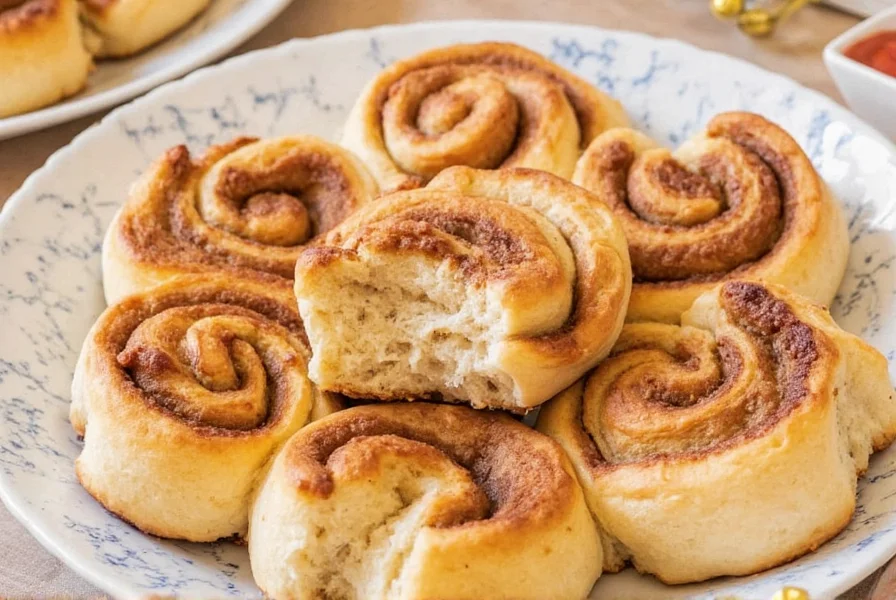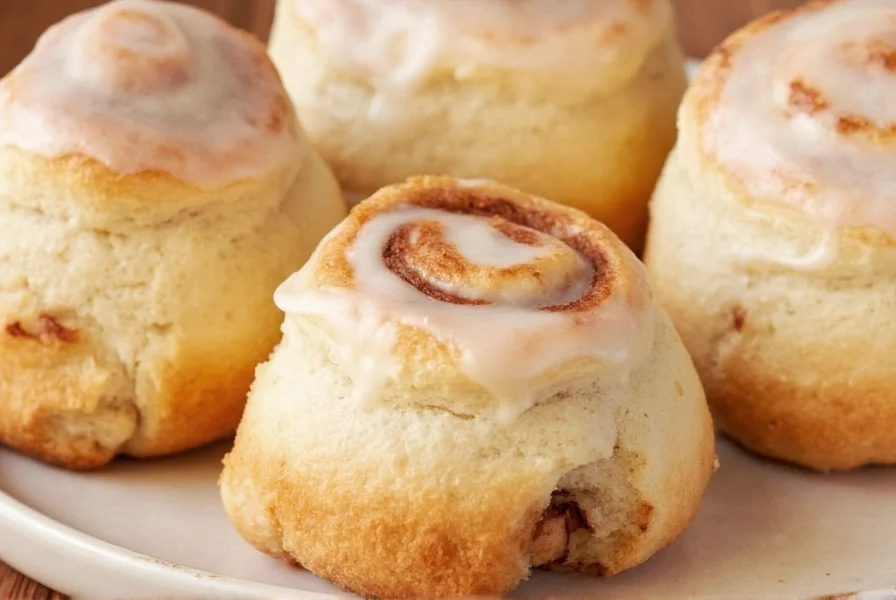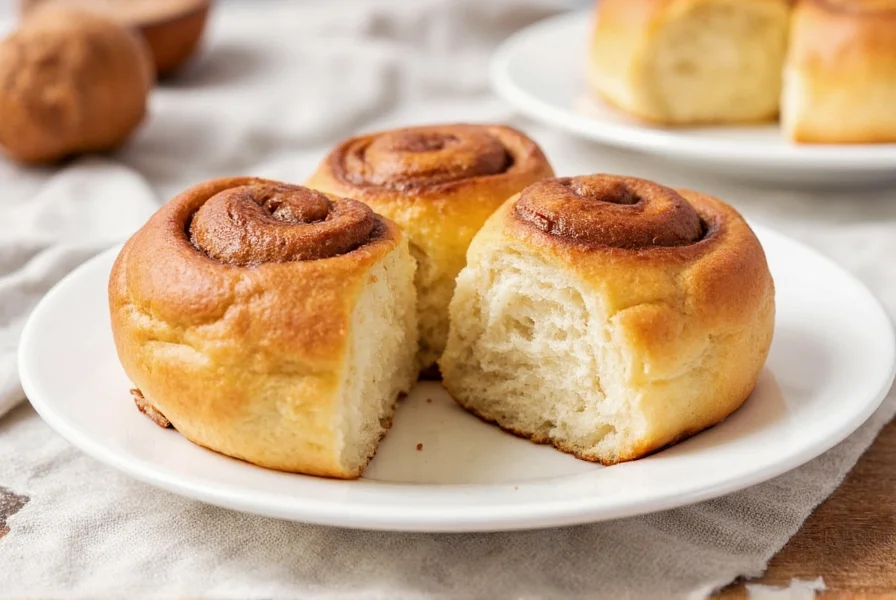Nothing compares to the aroma of freshly baked yeast cinnamon rolls filling your kitchen. Unlike quick bread versions that use baking powder, authentic yeast cinnamon rolls develop complex flavors through fermentation, creating that signature light, airy texture and rich taste that's become a breakfast tradition. Understanding the science behind yeast dough separates good rolls from exceptional ones.
The Science Behind Perfect Yeast Cinnamon Rolls
Yeast, a living microorganism, consumes sugars and produces carbon dioxide gas that creates air pockets in dough. For optimal yeast activity, maintain liquid temperatures between 105-115°F (40-46°C). Too hot and you'll kill the yeast; too cold and activation slows dramatically. The ideal dough temperature after mixing should be 75-80°F (24-27°C), creating the perfect environment for yeast to work without over-fermenting.
Gluten development is equally crucial. When mixing your dough, aim for the "windowpane test"—stretch a small piece of dough until it forms a thin, translucent membrane without tearing. This indicates sufficient gluten development for proper structure while maintaining tenderness.

Essential Ingredients for Best Yeast Cinnamon Rolls Recipe
Quality ingredients make the difference between ordinary and extraordinary cinnamon rolls. Here's what you need:
| Ingredient | Function | Professional Tip |
|---|---|---|
| Active Dry Yeast | Leavening agent | Proof in warm milk with 1 tsp sugar before adding to flour |
| Bread Flour | Higher protein content | Substitute 25% bread flour for all-purpose for better structure |
| Unsalted Butter | Flavor and tenderness | Use European-style butter (82% fat) for richer flavor |
| Dark Brown Sugar | Filling sweetness | Add 1 tsp molasses for deeper caramel notes |
Step-by-Step Guide to Making Soft Yeast Cinnamon Rolls
Follow these professional techniques for consistently perfect results:
Dough Preparation
- Warm milk to 110°F and dissolve yeast with 1 tsp sugar. Wait 5-10 minutes until foamy.
- Mix flour, sugar, salt, and softened butter in stand mixer with dough hook.
- Add yeast mixture and eggs, mixing on medium until dough comes together.
- Knead 8-10 minutes until smooth and passes windowpane test.
- Cover and let rise at room temperature until doubled (60-90 minutes).
Rolling and Shaping
When your dough has doubled, punch it down gently and roll into a 16x20 inch rectangle. Spread softened butter evenly, then mix 1 cup dark brown sugar with 3 tbsp cinnamon and 1/4 tsp cardamom for enhanced flavor. Sprinkle filling evenly, leaving 1/2 inch border. Roll tightly from long side, pinch seam to seal, and cut into 12 equal pieces using dental floss for clean cuts.

Troubleshooting Common Yeast Cinnamon Rolls Problems
Even experienced bakers encounter issues. Here's how to solve them:
- Dense rolls: Over-flouring or under-proofing. Measure flour by weight (120g per cup) and ensure proper rising time.
- Rolls not rising: Check yeast expiration date and verify liquid temperatures weren't too hot.
- Filling leaking: Use adequate butter barrier and don't overfill. Chill rolls 15 minutes before baking.
- Dry texture: Overbaking or insufficient fat content. Use accurate thermometer and maintain proper butter ratio.
Professional Baking Techniques for Exceptional Results
Take your yeast cinnamon rolls from good to extraordinary with these chef-recommended methods:
For optimal oven spring, preheat your oven thoroughly and consider using an oven thermometer for accuracy. Place rolls in the center of the oven with adequate spacing (at least 1 inch between rolls) to allow for expansion. For even browning, rotate the pan halfway through baking. The rolls are done when internal temperature reaches 190°F (88°C) and edges are golden brown.
When making cream cheese icing, bring ingredients to room temperature first for smoothest consistency. Whip the icing briefly—overmixing causes it to become runny. Apply icing while rolls are still warm (not hot) for perfect absorption without melting.
Variations and Customization Options
While classic yeast cinnamon rolls delight most palates, these variations can elevate your baking:
- Nutty twist: Add 1/2 cup chopped pecans or walnuts to the filling
- Orange-infused: Incorporate 1 tbsp orange zest into dough and filling
- Spiced upgrade: Add 1/2 tsp each of nutmeg and allspice to cinnamon mixture
- Gluten-free option: Substitute with quality gluten-free flour blend and add 1 tsp xanthan gum
Storage and Reheating Instructions
Proper storage maintains freshness and texture. Cool completely before storing. Keep at room temperature for up to 2 days in airtight container. For longer storage, freeze unbaked rolls on parchment-lined baking sheet, then transfer to freezer bags for up to 3 months.
To reheat frozen rolls: Thaw overnight in refrigerator, then let rise at room temperature for 1-2 hours before baking. For already-baked rolls, microwave individual portions for 15-20 seconds or warm in 300°F oven for 5-8 minutes. Never reheat multiple rolls together in microwave as this creates uneven results.
Frequently Asked Questions
How do I know when yeast cinnamon rolls are fully proofed?
Yeast cinnamon rolls are fully proofed when they've doubled in size and a light finger press leaves an indentation that slowly springs back halfway. This typically takes 60-90 minutes at 75-80°F (24-27°C). Under-proofed rolls will be dense; over-proofed rolls may collapse during baking.
Can I make yeast cinnamon rolls ahead of time?
Yes, you can prepare yeast cinnamon rolls up to two days ahead. After shaping, cover and refrigerate overnight. The cold slows fermentation while developing flavor. Remove from refrigerator 1-2 hours before baking to allow proper rising. Alternatively, freeze shaped rolls for up to 3 months, thawing overnight in refrigerator before the final rise and baking.
Why did my yeast cinnamon rolls come out dense?
Dense yeast cinnamon rolls typically result from over-flouring, under-proofing, or killing the yeast with liquid that was too hot. Measure flour by weight (120g per cup) rather than scooping. Ensure proper rising time until doubled in size. Verify liquid temperatures are between 105-115°F (40-46°C) when activating yeast. Over-kneading can also create excessive gluten, leading to toughness.











 浙公网安备
33010002000092号
浙公网安备
33010002000092号 浙B2-20120091-4
浙B2-20120091-4